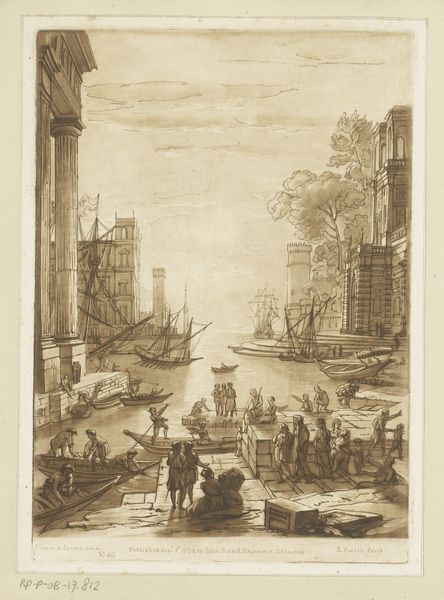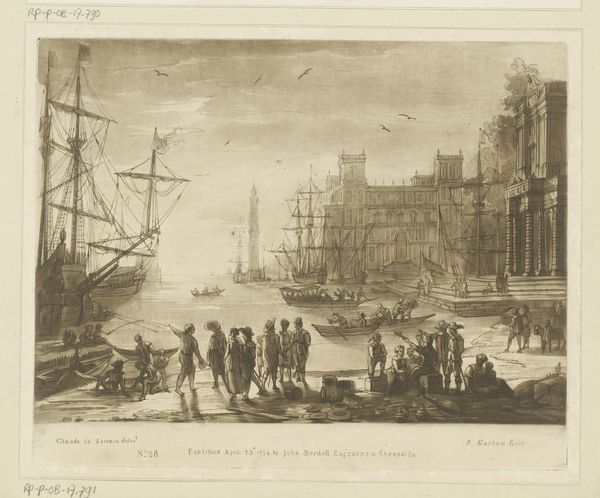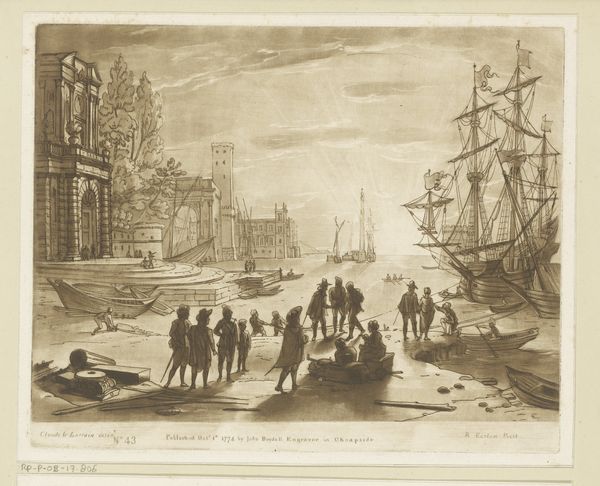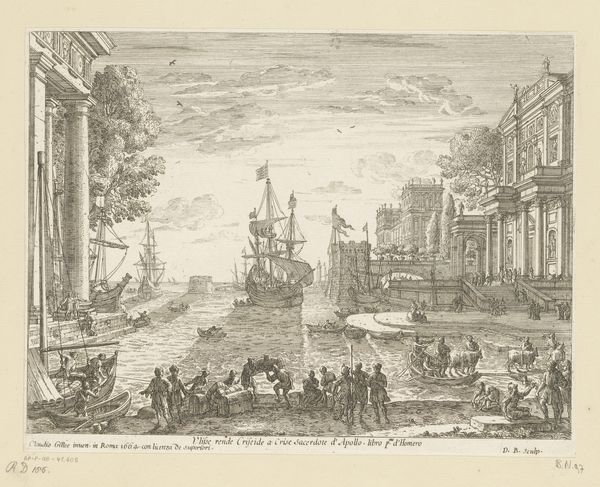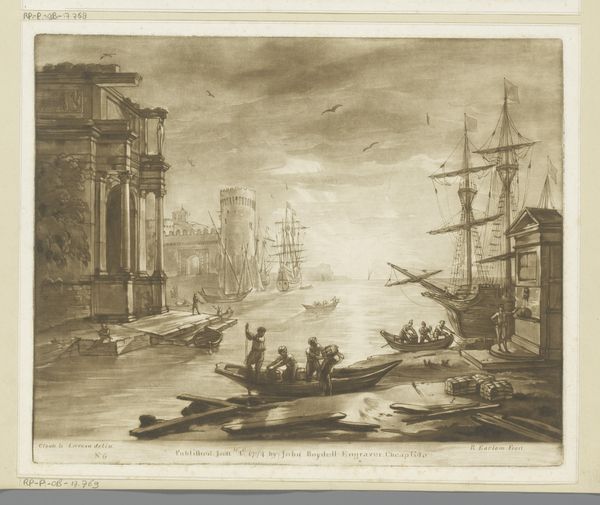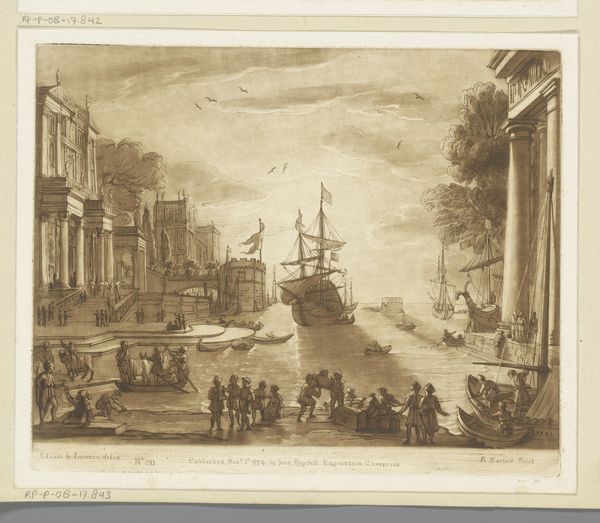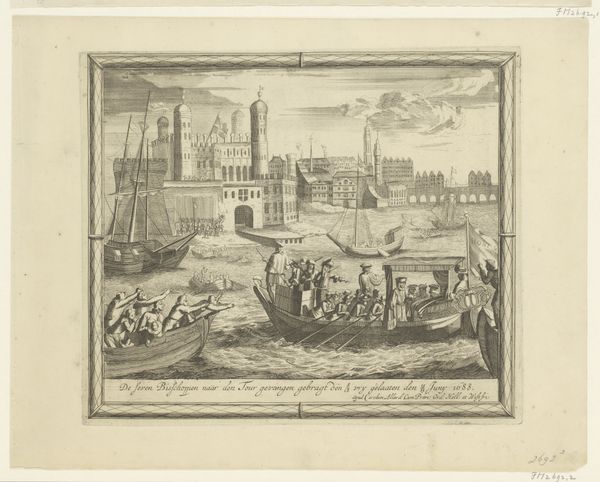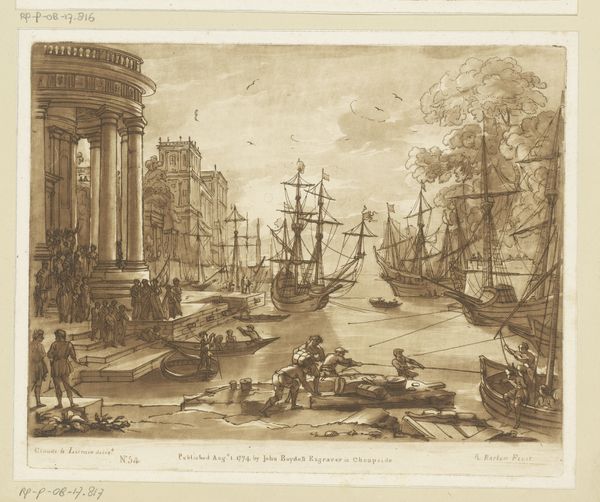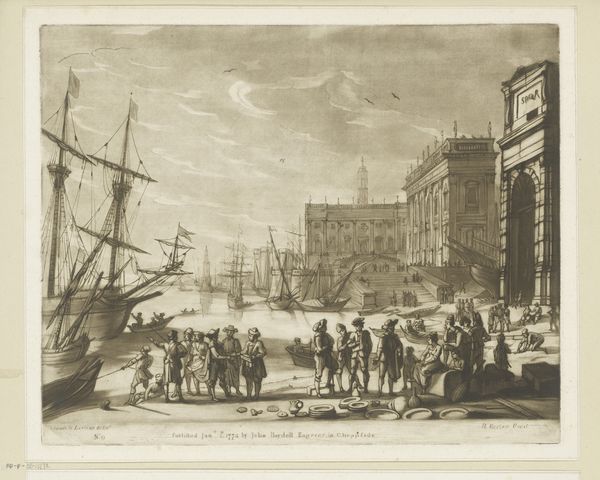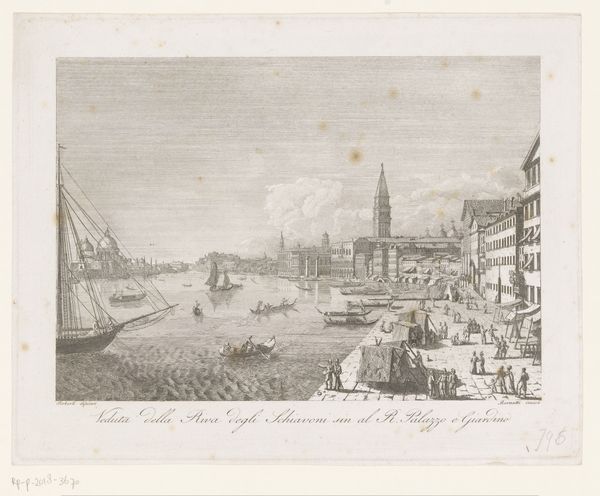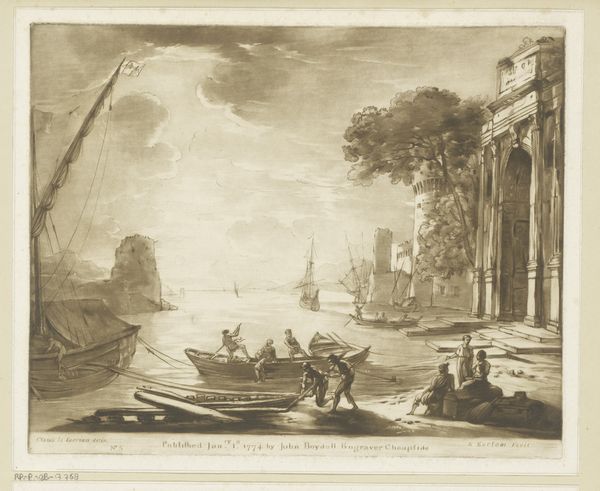
drawing, paper, ink
#
drawing
#
neoclacissism
#
landscape
#
paper
#
ink
#
cityscape
#
genre-painting
#
history-painting
Dimensions: height 272 mm, width 191 mm
Copyright: Rijks Museum: Open Domain
Editor: This is "Zeehaven met zes figuren aan wal en drie gebouwen," or "Seaport with six figures on the shore and three buildings," possibly from 1774 by Richard Earlom, made with ink on paper. It's currently located at the Rijksmuseum. I find myself immediately drawn to the classical architecture. What stands out to you about this work? Curator: I see here a fascinating convergence of artistic and political aspirations. Notice how the scene meticulously blends elements of a bustling port with grandiose classical architecture. Can you observe the apparent dichotomy between the daily life depicted by the figures at the shore and the timeless quality of the buildings? Editor: Yes, the people almost seem secondary to the impressive structures around them. What's the significance of placing genre figures within this imposing classical framework? Curator: Well, I suggest this reflects the aspirations of the Neoclassical movement, and we can consider how Earlom uses art to communicate power and progress. The depiction, though seemingly benign, strategically intertwines everyday activity with visual assertions of cultural and political dominance through symbolic architecture. Doesn’t that feel somewhat propagandistic? Editor: I hadn't considered it that way. So the painting's appeal lies in its idealized portrayal of civic life, almost a silent promotion of the state? Curator: Precisely. The placement in a public institution like the Rijksmuseum furthers this narrative. What thoughts do you have regarding the consumption and viewing context of this artwork in its current setting? Editor: I guess seeing it in the Rijksmuseum emphasizes its importance in Dutch cultural heritage, perhaps reinforcing national identity through this idealized vision of the past. Thanks, I never would have looked at a peaceful scene like this as a deliberate act of cultural representation! Curator: Exactly, and understanding the power dynamics embedded within artwork enhances our understanding and promotes engagement with its complex history.
Comments
No comments
Be the first to comment and join the conversation on the ultimate creative platform.
